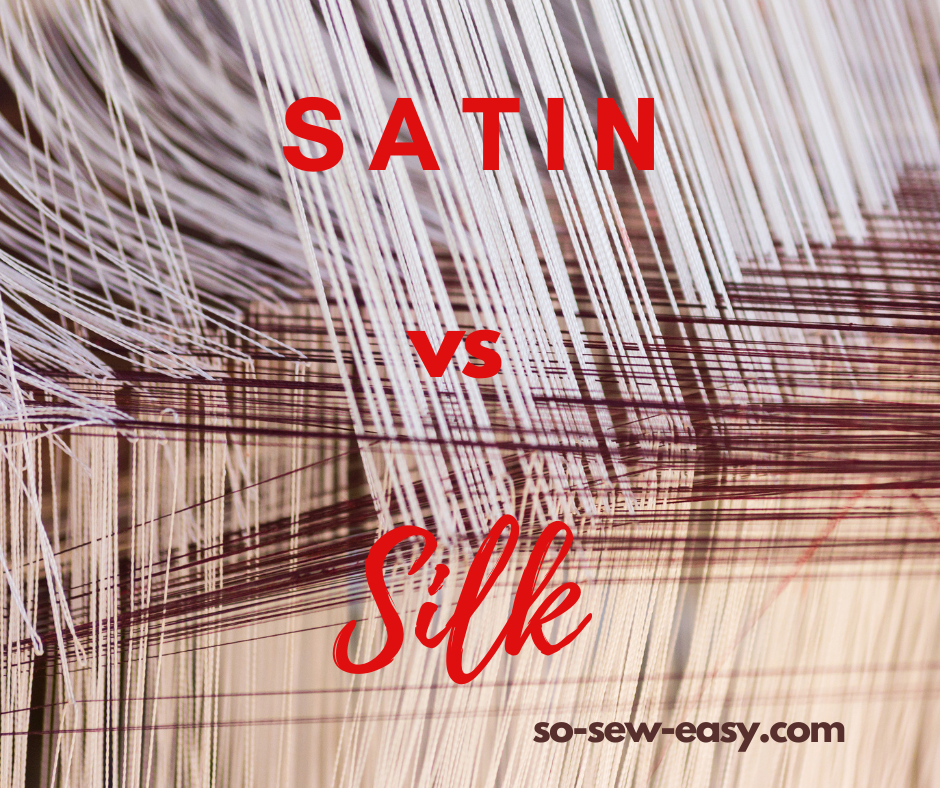
The choice between using satin or silk in your sewing project is an important one. They are similar enough to cause confusion but different enough in price to demand some research. In this article, we'll look at the advantages and disadvantages of satin vs silk in a variety of uses, as well as what makes each of them so special and important to know.
How To Identify Satin vs Silk
Satin Weave
The first and most important thing to know is that satin is a type of weave, while silk is a natural fiber. In fact, satin is a very important weave, one of the three fundamental textile weaves.
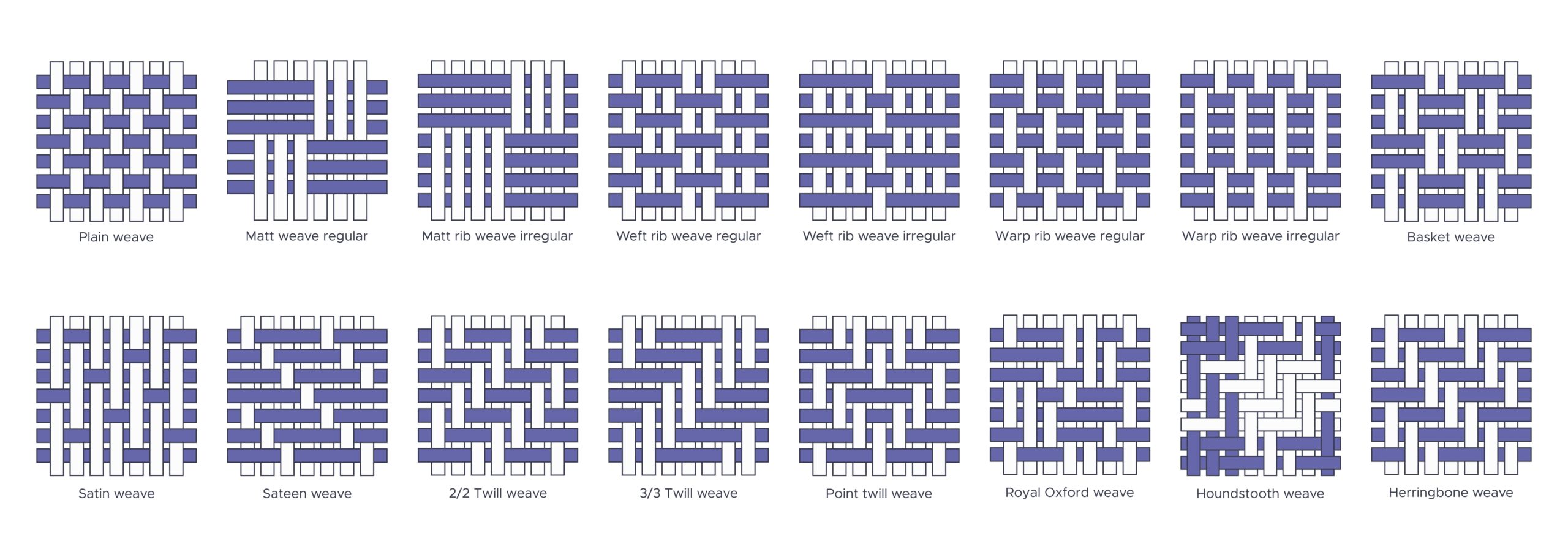

Satin and silk textiles are often confused. This is due to the fact that until modern weaving techniques and synthetic materials, all satins were made of silk. In fact, there are some definitions that don't even acknowledge satin textiles made of synthetics like polyester or nylon as “true satins”.
Furthermore, by weaving another type of fiber like a short-staple yarn such as cotton, the fabric created is considered a “sateen”. This is done because a short-staple yarn, which is a textile fiber that is made of many shorter fibers spun together (think cotton, wool, linen), is both cheaper and less luscious than filament fibers (which are one continuous length of fiber).
What Is A Satin Weave?
To understand the specifics of what makes satin different than other types of weaves we'll need to refresh some basic textile vocabulary.
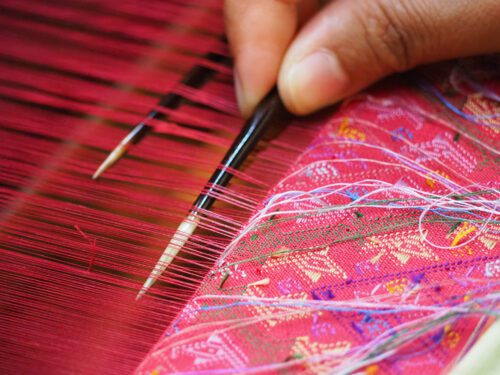

Weft and warp yarns are two basic components used in the process of weaving fabric.
- Warp yarns are the vertical yarns that are held taut on the loom during weaving. They run the length of the fabric and are usually stronger and more tightly twisted than the weft yarns. The warp yarns provide the structure of the fabric and are typically the first yarns to be woven onto the loom.
- Weft yarns are the horizontal yarns that are woven over and under the warp yarns to create the fabric. They run perpendicular to the warp yarns and are inserted by a shuttle or a needle during the weaving process. The weft yarns interlock with the warp yarns to create the fabric's pattern and texture.
Looking at a section of the above diagram we can see the warp yarns in white, and the weft yarns highlighted in purple.
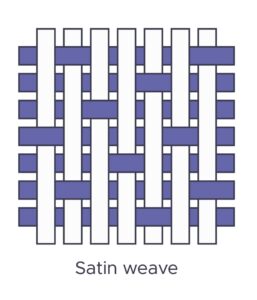

Together, the warp and weft yarns form the basic foundation of the fabric and determine many of its characteristics, such as its weight, drape, and strength. The type and quality of the yarns used, as well as the weaving technique employed, can all affect the final appearance and properties of the fabric.
Now with that understanding, it is easy to see why satin creates such an interesting, glossy, and pliable texture. In satin weave, the weft yarns pass over several warp yarns, then under one warp yarn, creating a smooth and shiny surface on one side of the fabric. Compare this to the other two fundamental weaves; plain and twill weave, which both have more frequent patterns of warp and weft which create a stronger textile, but without the comfortable and shiny float side.
What Is Silk?
Silk, being simply a natural fiber, is much easier to understand. I'll quote our article on the History Of Silk here to explain:
Silk is a product of quite a large number of number insects. Silk is mainly created by the larvae of insects undergoing metamorphosis (caterpillars into moths for example). The best-known silk comes from the cocoons of the larvae of the mulberry silkworm, these domesticated species are the source of the silk textile (though silk can be made, but with much more difficulty, from other types of moths).
…
The fiber itself is made of natural proteins, mainly fibroin. And its trademark shimmering appearance is given by the prism-like structure of the fiber.
…
The silk of the mulberry silkworm is used in a great variety of applications aside from the obvious use as clothing. Its unique appearance, ease of dying, strength, and durability has secured its place as the most valuable natural textile ever since its discovery. Some interesting commercial uses include parachutes, gunpowder bags, and surgical sutures.
https://so-sew-easy.com/a-brief-history-of-silk-part-1/
Silk, like any fiber, can be woven into most types of weave. All are fairly common and have their own advantages and disadvantages, but that is beyond the scope of this article for now.
5 Big Differences Between Silk vs Satin
Now that we know what satin and silk actually are, it becomes much easier to discuss their major differences. The following differences will be from the perspective of a sewer or buyer of the textile, as opposed to focusing on the manufacturing and technical applications. Below are some of the most important differences between satin vs silk as it relates to sewing.
1. Choice
Satin, in general, will give a sewer a greater variety of choices in application than silk. This is simply due to how the textile can greatly change depending on the type of blend you are using, the tightness of the weave, and the number of “floated” warp yarns.
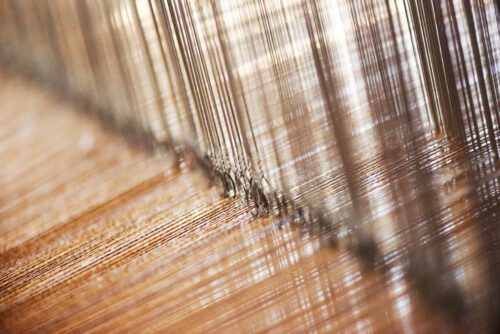

Satin generally comes in three common types and several variations. The types are:
- 4-harness satin weave
- 5-harness satin weave
- 8-harness satin weave
The number denotes the number of warp yarns the weft yarn passes over. For example, in the 4-harness satin weave the weft yarn passes over 3 warp yarns and under 1 warp yarn. In the 5-harness, over 4 and under 1, and so on. The more warp yarns the weft passes over, the more pliable (flexible and molded) the fabric is.
2. Price
Similar to the point on choice, satin will give you a much greater range in price than a pure silk textile. Depending on how much if any silk is blended into your chosen satin, you can potentially get a very cost-effective material for such a pleasant look and feel.
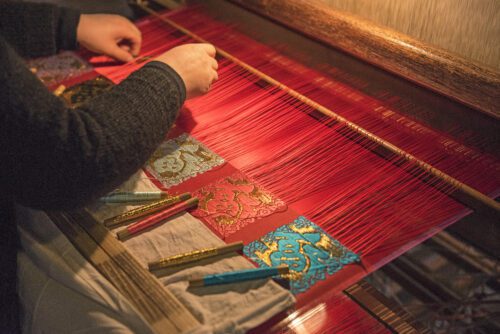

On the flip side, if you are making a product to sell, this price discrepancy will also have to be reflected. Being able to say a particular piece is “100% silk” does earn a premium, but only if that is what the customer is looking for.
3. Availability
Continuing with the theme, in most cases satin will be easier to find. Recent years have drawn greater attention to the fact that long supply chains bring certain risks to the individuals and businesses that depend on them. From the perspective of some based in either North/South America or Western Europe, satin, especially made of primarily synthetics will have a much more reliable supply chain in the future.
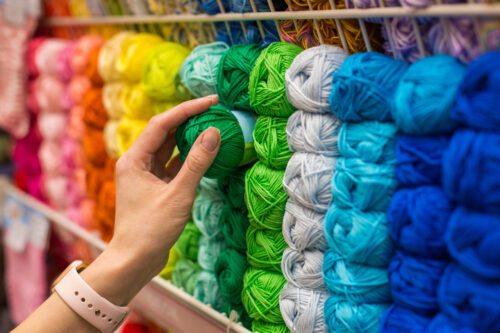

According to the International Sericultural Commission, an affiliate agency under the United Nations that exists to “Protect the interest of silk, silk industry and the stakeholders at national and international levels”, India and China produced 94.5% of the world's bulk silk supply. Production outside of these two countries does not come close to supplying a domestic market, let alone an international one.
4. Durability
Durability is a more subtle difference between satin and silk, but still a noticeable one. Generally, satin is not a strong fabric, it tends to snag and unravel easily. The same method of weaving that gives satin its flowing and shiny nature makes it innately unsuitable for rough treatment, or really even everyday wear.
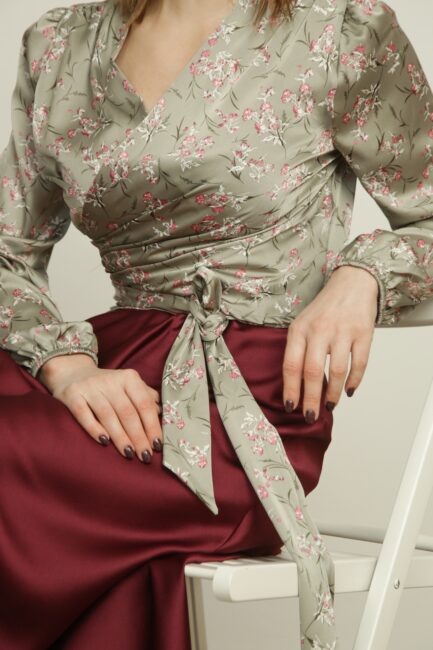

Silk is similarly unsuited to rough applications, but more due to the lightness it is usually woven in (due to cost and wanting to accentuate the materials' natural breathability). The fiber itself is one of the strongest natural materials found in nature and is used in a number of high-stress, unique applications like parachutes, surgical sutures, and bullet-resistant clothing.
In regards to washing, satin generally can be machine washed (especially if it is a non-silk blend). On the other hand, silk must be hand washed almost without exception.
5. Methods Of Manufacturing
The final big difference between silk and satin is the methods of manufacturing. Satin weave is a predominately industrial product, coming with all the human and environmental perils that are natural to the textile industry. Silk, while also being woven industrially, does have a much bigger traditional, and hand-made industry. For example, in Thailand, there are some 20,000 weaving families and millions of individuals in all parts of the industry across China and India.
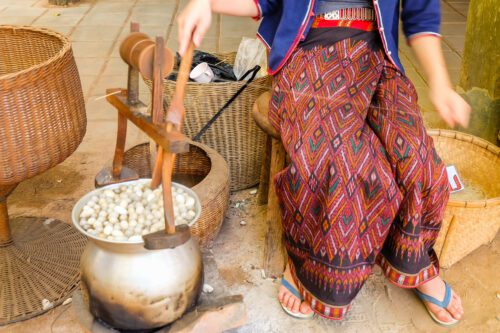

Satin can be made of a variety of materials, including natural fibers and synthetics, which can alter the source and impact of the fabric's material and environmental cost. Silk is made from the cocoon of the mulberry moth/silkworm, and requires the harvesting of countless creatures. Like the point above, there is a much larger base of traditional silk-worm farmers compared to suppliers of the industrial textile industry.
How To Use Satin vs Silk
Now that we understand what satin and silk are, as well as their major differences, we can look at some examples of how to use them in your sewing projects. As an extra note, we have an article discussing Silk Satin specifically, which is satin that is made with 100% silk and known as one of, if not the most luxurious fabrics out there. So far we've generally discussed silk and satin separately, as silk satin is fairly rare and not often used.
Satin Underwear And Undergarments
Satin and silk are both used in making soft and attractive underwear. In my opinion, a nice blended satin or sateen is best for most cases (unless you have a particular allergy, or want to make something extra-special).
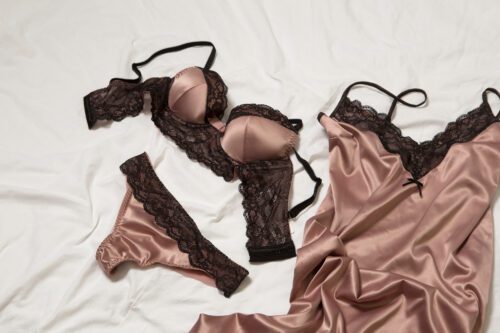

Using satin fabrics will give you a greater variety, and because the overall cost is lower, it would allow you to make them an everyday wear piece. Since undergarments don't get much wear from things that may snag or unravel them, they should hold up quite well.
Silk Dresses And Gowns
Fancy dresses and gowns are the perfect projects for silk. The pieces will justify the price and will provide that next level of style and comfort that will set it apart from even high-quality satin blends. It makes sense to use silk in projects where you don't intend to spare any expense because as long as you store it well, your dress should last decades if not a lifetime.
There are several important things to take note of when sewing a large garment out of silk. For example the type of stitch to use, or how to prevent the material from slipping as you work with it. All this and more is discussed in this Valentine's Day Dress Pattern, free and complete with instructions.
Satin Or Silk Bedsheets
Silk bedsheets are not too uncommon considering their expense, particularly in places with hot summers or the tropics. Due to a large amount of square footage, a good set of silk sheets can get quite expensive. They are durable, and well-maintained will last a very long time and are often made in a non-satin weave for better durability and less slipperiness.


Satin bedsheets are similarly cool, again with varying results depending on the blend. In general satin sheets are quite slippery and glossy compared to other types of sheets. Personally, I don't enjoy them, I find that they slip off in the night very easily, but I know many people quite like them, so perhaps it is an acquired taste. If you're curious about the types of bedsheets and their differences I thought this article was useful.
Conclusion
The differences between satin vs silk can be summarized like so:
- Satin is a weave (which is often of or blended with silk, while silk is a fiber (which can be woven into a variety of weaves).
- Satin, due to the many blends and variations available gives the sewer the most options and versatility
- Both have limitations in terms of durability, but the satin weave is known for its poor performance in harsh or abrasive conditions
- Silk is the most luxurious fabric fiber in the world, and should be treated as such for special uses
- Silk is almost entirely sourced from India and China, which means a long and potentially unpredictable supply chain
- Both require skill to handle and work, but due to price satin is best to learn with
I hope you enjoyed this article, don't forget to check out our Free Sewing Patterns that use silk or satin. Here are some of the most popular projects:
P.S. Don't forget to join our mailing list to get special content and unique offers!








I appreciate your article. Since around the 1970’s when polyester became the “in” fiber, it seems people have started to call shiny fabrics silk. I was in a Joann fabric store and a woman was looking for silk satin and the employee was showing her polyester satin. I tried to explain the difference, but I am not sure either of them understood. Satin can be made out of many fabrics. The slip for my wedding gown was cotton satin. So thanks for explaining this. I am also sad that women are buy so many things on line and are unhappy because they don’t like the fabric. Online venders do not always list the fiber or the weave. It makes it have for me to shop.
The silkworms are suffocated to allow the fibre to be processed.
This is a very well written article that hits all the important points! You’ve expertly cleared up many common misperceptions. Thanks 😊.
Synthetics – UGH!!!